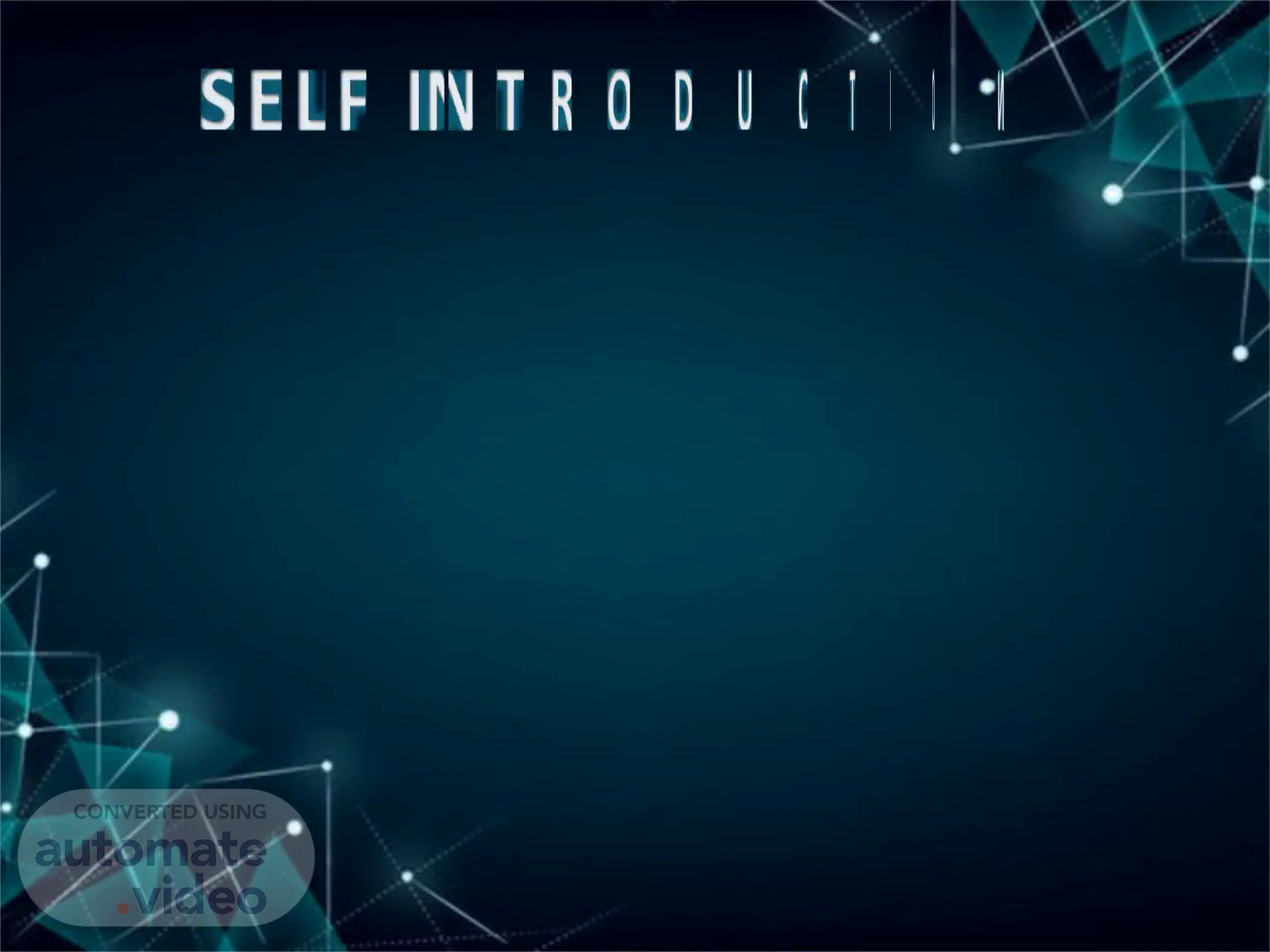Scene 1 (0s)
SELF INTRODUCTION. NAME-SAMEER KHAN CLASS-10 ROLL NO.- 19 ST. XAVIER’S SCHOOL SUBJECT TEACHER-MR. RASHID KHAN.
Scene 2 (12s)
ART AND INTEGRATION PROJECT.
Scene 3 (18s)
TOPIC ELECTRICITY.
Scene 4 (24s)
INTRODUCTION. Electricity has become indispensable in our everyday life. It is a controllable and convenient form of energy for a variety of uses in homes, schools, hospitals, industries and so on. For example, all the modern facilities at home such as fans, geysers, washing machines, television, radio, etc., work on electricity. The list is unending. Today, life is totally dependent on it. The effects on our lives can be seen when the failure of power lasts only a few hours ..
Scene 5 (49s)
Origin In 1752, Benjamin Franklin ran his famous kite experiment that sparked the discovery of electricity. As a prominent American scientist and one of America's founding fathers, Franklin tied a key to a kite string during a thunderstorm and proved that static electricity and lightning were one and the same thing ..
Scene 6 (1m 4s)
Where does electricity come from? Electricity's journey to your socket is both very fast and very long. Although it seems so, it is not magic. The step-by-step process is as follows: Power generation: electricity is created in plants capable of obtaining electricity from primary energies. The so-called renewable primary energies are wind, solar radiation, tides and non- renewables are coal, natural gas and oil. Companies build power generation facilities and own (in whole or in part) so-called power stations and infrastructure. They sell the energy generated to the companies that market them (suppliers). Most electricity is generated with steam turbines using fossil fuels, nuclear, biomass, geothermal, and solar thermal energy. Other major electricity generation technologies include gas turbines, hydro turbines, wind turbines, and solar photovoltaics ..
Scene 7 (1m 39s)
In India, power is generated from conventional (Thermal, Nuclear & Hydro) and renewable sources (Wind, Solar, Biomass etc.). However, Major production of Electricity is achieved through coal a thermal power plant which is around 75% of the total power generation. India’s total power generation in Dec 2020 stood at 103.66 billion units, according to data realised by the Central Electricity Authority. Amount of power generated in meghalaya According to the Central Electricity Authority report 2016-17, the actual shortage of power in Meghalaya is at 5.9 per cent. Meghalaya can generate about 3,669 MW from various renewable energy sources and about 3,000 MW from solar energy. Apart from solar energy, Meghalaya can also tap 165 MW of bio energy, 90 MW from wind energy and 414 MW from small hydro energy. Amount of power generated in Arunachal Pradesh As of October 2017, Arunachal Pradesh had a total installed power generation capacity of 277.96 MW. Out of these central utilities contributed 168.97 MW, private utilities contributed 4.29 MW & state utilities contributed 104.61 MWa.
Scene 8 (2m 24s)
Renewable energy in conjunction with hydropower are the major sources of electricity generation in the state & contributed around 108.99 MW & 97.45 MW to the installed capacity of the state, respectively Energy transmission: once the energy has been obtained and after being converted into electricity, it is transmitted by overhead power lines (suspended by towers) or underground, from the power plants to the substations. There are other elements there, called transformers, which are used to ensure an adequate electrical voltage. Substations are necessary to process the electricity and maintain the right voltage and are usually outdoors near power plants and/or in the periphery of cities. If they are not large in size, you can exceptionally find them in the city itself, inside a building ..
Scene 9 (2m 57s)
Electric Change: A physical entity, which experience a force when kept in a electromagnetic field is called electric charge. It is represented by a Its 3.1. unit " coloumb " (c). → charge on 1 electron e = 1.6 X10-19 C Q = ne Property, of electric charge: Like charge Repel while opposite change attract each other. Electric charge can be added algebricaly . Electric charge is quantised . Electric Current - Rate of flow electric charge in per unit time called electric current. It represent by I. It's S. T. unit is "Ampere" (A). If a amount of charge is flow through conductor in t second then, I =Q\t = ne\t Electric Potential : Amount of work done when one unit charge moved from infinity to a point, in electric field ..
Scene 10 (3m 30s)
Ohm's law states that the voltage across a conductor is directly proportional to the current flowing through it, provided all physical conditions and temperature remain constant. In the equation, the constant of proportionality, R is Resistance and has units of ohms, with symbol Ω V=IR V= Voltage I=Current R=Resistance.
Scene 11 (3m 46s)
Resistance is a measure of the opposition to current flow in an electrical circuit. Resistance is measured in ohms, symbolized by the Greek letter omega (Ω). Ohms are named after Georg Simon Ohm (1784-1854), a German physicist who studied the relationship between voltage, current and resistance.
Scene 12 (4m 11s)
Meghalaya now is largely dependent on power from hydel projects and other source of energy like coal, fossil fuel and others. But such power generation has not only taken a toll on the environment but also gets exhausted at a certain period of time, he said. The State Govt. through The Meghalaya New and Renewable Energy Development Agency (MNREDA) has identified three sources of Renewable Energy that can be exploited in the state and available in abundance out of many sources of renewable i.e. solar photovoltaic, wind energy and bio-energy..
Scene 13 (4m 36s)
Renewable resources in A runachal P radesh. Solar Energy. Hydro Power Energy. Bio-Energy. Wind Energy..
